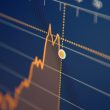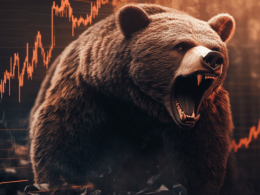Based on a conversation1 between David Richardson, Head, Enterprise Strategy, RBC Global Asset Management, and Stuart Kedwell, CFA, Managing Director, Senior Portfolio Manager, and Global Head of Equities at RBC Global Asset Management
In this market and economic climate increasingly dominated by policy shockwaves and geopolitical uncertainty, investors are seeking not just direction, but conviction. When the latest round of U.S. tariffs was announced—what David Richardson, dubs “the big bazooka”—it sent ripples across global markets. Yet for Stu Kedwell, the moment is not a cause for panic—it is a signal to get to work.
“This is a day where you and the team are relatively active,” Richardson observes, “not only from working, analyzing, doing the calculations, crunching the numbers, but actually in market making moves?” Kedwell’s response is as deliberate as it is calm: “Yep. And I expect that that will likely continue… You’re likely to make some changes that you think are improving the odds of longer-term success.”
This is where active management earns its keep.
The Unexpected Playbook of Predictability
At first glance, the White House’s new tariff policy seemed like a curveball, but Kedwell reminds us that it wasn’t completely unpredictable.
“It was different than people thought it was gonna be… but you could actually go back and look at countries and their specific trading relationship with the U.S., and you could almost have calculated where this tariff was going to come in,” Richardson notes.
Kedwell agrees but adds nuance:
“The way that some of the tariffs were calculated was a little bit of a surprise… particularly some of the impact on U.S. consumer stocks that import from a variety of areas.” He flags the exemptions list as another wildcard, noting that “maybe a third of U.S. imports might be exempt from some of the tariffs.”
The devil, as always, is in the exemptions.
Markets React. Professionals Prepare.
Rather than interpret volatility as chaos, Kedwell frames it as an opportunity for disciplined recalibration.
“You know, before the market opens, you’ve kind of taken note… the market is trying to handicap the possibility of a slowdown in earnings,” he says. In moments like these, Kedwell and his team lean into scenario refresh: “It’s not a new analysis. It’s just a refreshing.” That means sector-by-sector reviews, re-evaluating downside cases, and identifying which stocks are flirting with bearish assumptions.
And it’s not just about picking winners. It’s also about understanding dislocations. “We do have many of these defensive names. Is the spread in valuation between the defensive name and something that might be a little bit more cyclical too wide?”
This is how professionals convert short-term dislocations into long-term positioning.
Clarity and Uncertainty: The Tug-of-War
Ironically, in laying out the mechanics of the tariff rollout, the administration offered a dose of clarity—but also reignited uncertainty.
“There’s more certainty because he’s detailed the mechanism… but the other side to it is the uncertainty around the estimates of the significance—you could drive a truck through [them],” Kedwell quips. Economists’ predictions on impact vary widely, with some suggesting as little as 10–13% and others closer to 18%, depending on exemptions.
This uncertainty has a tell: “When you see movement in the currency market like we’ve seen, I think that is the signal of uncertainty,” Kedwell emphasizes. The U.S. dollar fell, and bond yields dipped—but not as much as expected, leaving open questions about how much of the news had been priced in.
Behavioral Finance in Action
What separates the professionals from the masses isn’t just insight—it’s temperament.
“I’m not walking the trading floor to look at anything specific… I’m looking more for the tone,” Richardson reflects. “It was just a very, very calm environment… there’s just no emotion in the calculus.”
Kedwell agrees, describing the team’s process as “very iterative.” He explains, “You know that ultimately, there’ll be opportunity to find its way out of this… we’ve seen stock price change. We haven’t quite seen a full valuation change relative to the uncertainty rise. But uncertainty rising, valuation improving is… something that eventually we want to lean into.”
This is the real advantage of professional investment management: unemotional analysis driven by systems, not sentiment.
Strategic Flexibility, Tactical Patience
Kedwell outlines a three-bucket framework for making portfolio decisions amid volatility:
- Deploying Cash: “We do have some cash… putting that cash to work.”
- Relative Valuation: “Is the spread in valuation between the defensive name and something a bit more cyclical too wide?”
- Intra-Sector Adjustments: “Two defensive stocks or two more cyclical stocks that are reacting differently today… maybe there’s opportunity there.”
On the asset allocation front, the rally in bonds opened up rebalancing discussions. “While the equity market is selling off, the bonds are rallying… do we want to do some rebalancing?” he says.
This is not “set it and forget it.” It’s adapt, assess, and act—with discipline.
For Long-Term Investors: Stay the Course, Strategically
The volatility may have spiked, but the advice for long-term investors remains steady.
“No. I think it is,” Kedwell responds when asked if this level of activity was necessary for someone saving for retirement twenty years from now. “Long-term earnings growth is not very volatile, but share prices on any given day can be.” Tariff disruptions may prompt corporate restructuring, but they don’t undermine the broader investment thesis. “Management teams… are coming up with new plans… business will find new ways to make money.”
And yes, the old faithful strategy still works.
“We’ve been… obviously, we’re the dollar cost average player,” Kedwell says, with a smile, “that’s the way to kind of approach this environment.”
A Real-Time Case for Active Management
“This is what I wish most investors could see,” Richardson muses. “Just the behavior and the personality… the way investment managers react.” Calm, deliberate, analytical.
This isn’t just a discussion of tariffs—it's a masterclass in navigating market shocks. “You don’t come to work each day saying, ‘I need to change my portfolio,’ but the puzzle pieces change… and sometimes it’s significant,” Kedwell says. “You're likely to make some changes that you think are improving the odds of longer-term success.”
In volatile markets, that kind of clarity isn’t just valuable—it’s essential.
***
1 "Tariff turbulence: Adapting with active investment strategies." RBC Global Asset Management, 3 Apr. 2025, www.rbcgam.com/en/ca/insights/podcasts/tariff-turbulence-adapting-with-active-investment-strategies/detail.
Disclosure: This editorial article is based on the RBC GAM podcast episode "Tariff turbulence: Adapting with active investment strategies" featuring David Richardson and Stu Kedwell. The views expressed are for informational purposes only and should not be construed as investment advice. Please consult a financial advisor before making investment decisions.














